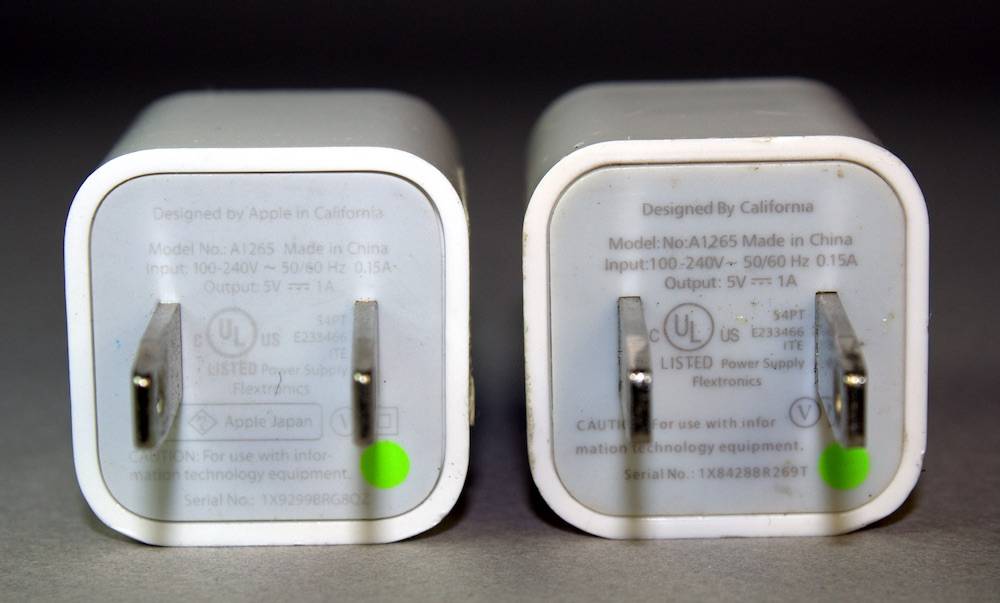4 Look Carefully at the Devices Themselves for Correct Data

Okay, let’s say you don’t have the packaging anymore, or you can’t really remember where you got this particular Apple product: You can also find out a lot by looking at the products themselves. Many products have product data and text somewhere, often on the base or back where it’s usually out of sight. Examine this text very carefully: It’s often incorrect, misspelled, or missing entirely on counterfeits, which is a sign the product did not come from Apple. This is also a good way to test any products you may be buying directly from a store that’s not an Apple store or affiliate.
The same is true of Apple charging cables adapters, which tend to be the most commonly counterfeited product – for example, at one point in time, more than 90% of Apple chargers and cables sold on Amazon had been shown to be counterfeit. Ouch! Fortunately, product labels can again help analyze any chargers or cables you have. Examine the cable closely: Somewhere in the first foot of cable from the USB end, you should see a stamped label that says “Designed by Apple in California.” This label will be followed by specific manufacturer information and a product code, which will be one of three potential labels,: “Assembled in China,” or “Assembled in Vietnam,” or “Industria Brasileira.”
If your cable doesn’t have this label on it, it’s almost certainly a counterfeit. Because counterfeit labels can be particularly dangerous when it comes to starting fires or causing other problems, you should try to replace it ASAP.
